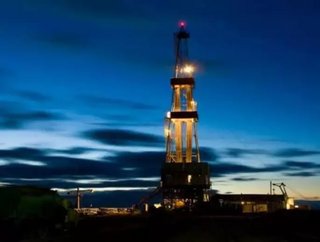Drilling: Advancing technology for down-hole inspection

New advancements are continuously being developed to improve performance and efficiencies for oil well drilling. It is important for oil companies to stay current with the trends of advanced drilling capabilities. Saving time, keeping costs down and minimizing the margin of possible human error are all legitimate reasons why companies should take the necessary steps to ensure quality tools are being used, and make investments in certain high-tech devices.
Baker Hughes has been developing technology solutions for the oil and gas drilling industry for over a century. The Company caters to the needs of oil companies around the world and are constantly striving to come up with better, more cost-effective ways for these companies to do business. Exploration and drilling can be a dangerous, sensitive process. Having the right equipment can make a big difference out on an oil rig or in the oil field. Recovery times are quicker, efficiencies are greater and overall decision making happens faster with the right tools.
Well logging, or borehole logging, happens when drilling boreholes—the horizontal or vertical narrow shaft drilled to extract the oil or gas. Logging includes the process of surveying and recording specific details of the geologic formations that are penetrated by the borehole. Baker Hughes and other solutions-based companies have developed highly sophisticated logging-while-drilling (LWD) devices that assist with the inspection process, ensuring that measurements and other details found while inspecting the borehole are recorded accurately.
In the past, in order for oil and gas companies to be able to log measurement information from down inside the borehole, a ‘wireline’, or a type of cable, would be tied to measuring devices or other equipment, and then would be dropped down the open passage. Several devices could be strung to the wire at once for multiple functionalities. However, logging-while-drilling (LWD) technology has almost completely replaced the wireline technique of measuring data. Now specific information can be taken from the borehole immediately and virtually transmitted in real time to computer stations on site or at the office base. Additionally, workers can get an up close image of the inside of the borehole for closer inspection.
Baker Hughes invented the INTEQ AziTrak™ Deep Azimuthal Resistivity LWD System—an advanced sensing technology that allows for a more detailed and much faster down-hole view than a conventional sensor could provide. This system acts as a GPS system and was designed to allow oil rig workers to have a 360 degree perspective of the bed boundaries and oil and water contact zones. Workers are given a better scope for measuring, detecting and visualizing when inspecting a drill hole. This technology is compact and placed near the bit for advanced reservoir navigation.
Evaluation and logging of the borehole occurs in real time with this product, also identifying non-productive intervals. Through this process, the well can be guided to avoid a reservoir exit. Workers are able to make more accurate well placement decisions, resulting in higher efficiency. According to the Baker Hughes website, “The technology is particularly useful in reservoirs associated with a high degree of geologic uncertainty. Early detection of nonproductive zones enables on-the-fly adjustments.” Wellbore placement in addition to wells that are high angle and horizontal will be more exact with this technology.
The 3D eXplorer (3DeX) Service is another data processing technology developed by Baker Hughes. This tool allows for accurate measuring and computation of vertical and horizontal formation resistivity. This device is particularly useful for challenging borehole environments.
Major oil company, Halliburton, utilizes 3D visualization software for drilling operations. With Landmark’s AssetView™ and 3D Drill View KM™ software, workers can obtain a real-time evaluation for measuring and logging while drilling. The highly advanced technology empowers the user to make fast decisions since the view of the borehole is so clear and concise with the 3D model, and due to the fact that data is reviewed in real time. The visualization equipment runs on the Microsoft Windows® 2000 and XP operating systems where users can view and alter the earth model by rotating or zooming. With this technology, teams in the field and teams back at the office can share information quickly and accurately. Decision making becomes more uniform, more accurate and can happen immediately. As soon as data is collected at the drilling site, teams elsewhere can view that data.
New technology is being researched, tested and introduced every day. By having more technical equipment, oil and gas companies are able to quickly and accurately survey and measure a borehole.






